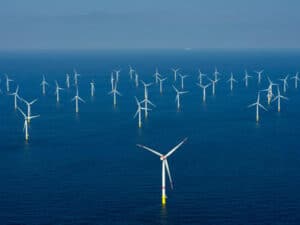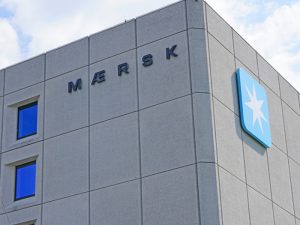
Finland’s Langh Ship develops its own exhaust scrubber
Written by Nick Blenkey OCTOBER 3, 2013 — Laura Langh-Lagerlöf (left), commercial manager of Finland’s Langh Ship, says the family-owned shipping company has “really hit the nail on the head” with an exhaust gas scrubber of its own design.
OCTOBER 3, 2013 — Laura Langh-Lagerlöf (left), commercial manager of Finland’s Langh Ship, says the family-owned shipping company has “really hit the nail on the head” with an exhaust gas scrubber of its own design.
Although the sulfur limit for ship fuel in the North Sea and Baltic Sea is now 1%, Langh Ship’s m/s Laura sails in the area with whatever fuel the charterer has found in Rotterdam, no matter how high its sulfur content — thanks to a closed loop scrubber that emits exhaust gas that is even cleaner than if the fuel had a sulfur content of no more than 0.1%.
The sulfur limit for fuel in the North Sea and Baltic SECA will drop to 0.1% at the start of 2015.
“In practice, this means that ships will have to switch to diesel, i.e. marine gas oil (MGO), unless they are equipped with exhaust scrubbers,” says Langh Ship Managing Director, Hans Langh.
The difference in price between MGO and the low sulfur heavy fuel oil currently being used in the area is more than $300 per tonne, bringing a major increase in shipping costs.
Hans Langh says the company started looking into various options early on: “We requested quotations on scrubbers, but the offers we were getting were just too high to seriously consider installing them in used vessels.”
That led the company to decide to develop its own scrubber. The decision was made a little easier by the fact that another family-owned company —Industrial and Ship Cleaning Services Hans Langh – has 40 years’ experience in cleaning washing waters.
Langh Ship’s fleet comprises five multipurpose cargo vessels, all delivered by German shipbuilder J.J. Sietas, three in 1986 and two in 2007.
The challenge in installing exhaust scrubbers in ships, especially when it comes to retrofitting, is the lack of space. Another problem appeared to be cleaning of the emission washing water used in the scrubber.
Legislation allows seawater used in scrubbers to be discharged into the sea (i.e. open loop scrubber). “For us, however, it was important that our scrubber be based on a closed loop system, whereby the requirement is for the washing waters used in the process to be cleaned so as to separate the harmful substances,” explains Reino Verosaari, Langh Ship’s Senior Technical Adviser.
Hans Langh himself has extensive expertise in water treatment since Industrial and Ship Cleaning Services Hans Langh has 40 years’ experience the area. This expertise served as the foundation when the company set off to develop a scrubber and washing water processing system for its ships.
The development work paid off: while m/s Laura was docked in May, a scrubber was installed in the vessel and test runs have been carried out since then. With special permission from the Finnish Transport Safety Agency, Trafi, high sulfur fuels have been tested, too. The results are encouraging: the exhaust gas is cleaned in line with the requirements of the upcoming regulations, and the washing waters used in the method are also cleaned. In addition, the cleaning system removes particulates from the exhaust gas, even though this is not required by legislation.
The system is protected by multiple patent applications.
“We would never have been able to accomplish this without the participation of Tekes, the Finnish Funding Agency for Technology and Innovation,” says Hans Langh. “We put in a tremendous amount of effort into conducting research and developing and testing methods, and the support and funding we received from Tekes was crucial in that respect. After first building a small-scale model of the scrubber and conducting the ship’s exhaust gases to it, the cleaning of the washing water was tested using various methods. The project was started up in 2012, and now the results are in.”
“Our goal was to create a scrubber that would change the ship’s properties as little as possible and barely affect its cargo capacity,” says Laura Langh-Lagerlöf, who was part of the development team. “And on m/s Laura, we really hit the nail on the head – you can’t even see the scrubber from the outside.”
Since the scrubber does not result in any new projections from the ship, nor does the vessel’s center of gravity change as a result of the scrubber, its sailing characteristics remain the same. The efficiency of the installation is further increased by the fact that the increase in weight is very small. The washing water cleaning system additionally ensures that on board storage of the waste destined for land does not actually reduce the vessel’s cargo capacity.
Langh Ship is planning to install scrubbers in its four other vessels. The method will also be made available to others.
“This has been such a success that we believe others may be interested in it too,” says Laura Langh-Lagerlöf.





Leave a Reply
You must be logged in to post a comment.